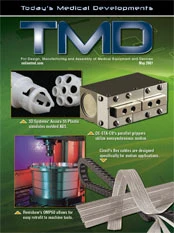
The Stone Age didn't end due to a lack of stones.
As better alternatives become available, the limitations of existing technologies become more apparent and less acceptable. Such a revolution is beginning with the choices for surgical biomaterials used to repair diseased or deficient soft tissues. Traditionally, surgical repair of diseased, deficient or absent tissue relied on transposition of autologous tissue or transplantation of allogeneic tissues to achieve a functional outcome. Albative procedures were an alternative to close a defect while accepting the cosmetic and functional consequences of tissue loss. Last, biomaterial implantation has been used to maintain structure at the cost of function and foreign body inflammation. The possibility of reconstituting both structure and function without transplantation or tissue transposition was not an option—until now. It may be possible to harness the patients' own ability to regenerate tissues that more closely recapitulate functional aspects of replaced soft tissue.
THE CRUX OF THE PROBLEM
Man-made synthetics available for
medical purposes are not biological.
They are mechanical and physical
materials that have been found to be
biocompatible, at least in the strictest
sense, but they are recognized by the
patient's cells as foreign. Therefore,
materials that are implanted but cannot
be truly assimilated into living tissues
serve as a source of chronic inflammation,
provide an immunologically
indefensible location to harbor pathogens,
and continue to be a physical
mismatch to their surrounding tissues.
A surgery with these materials often
leads to another surgery or a chronic
problem.

Tissue re-growth process that takes place after the natural biomaterial medical product is implanted.
HARNESSING HEALING
"Guided tissue regeneration" has
long been a catch-phrase in biology,
and it aptly describes a new class of
biomaterials that can recapitulate tissues
through conductive and inductive
mechanisms. Embryological and regenerative
medicine studies have clearly
shown that the interplay between cells
and the extracellular matrix form the basis
for tissue and organ development.
Cells, scaffolds and signals become the
building blocks for creating functional
outcomes in the discipline of Tissue Engineering.
NEW BIOMATERIALS EXIST Wishing for a better solution to foreignbody implants is one thing, but making that desire a reality is quite another. Biology is complex, and the creation of a product that can harness biological processes, rather than compete with biological processes, has been the goal of many companies. Fortunately, today a new class of "biological" materials exists based on the extracellular matrix of harvested tissues. Some are made from human tissues, others are made from animal tissues; in every case, they are, at minimum, focused on tissue conduction through a scaffolding mechanism.
Perhaps even more than their synthetic counterparts, biologic implants require the technical prowess of the surgeon and the medical condition of the patient to be congruent with principles of good tissue repair. Some patients may be of such a compromised physical or metabolic condition as to make them incapable of completely repopulating and healing a biologic implant. Similarly, poor attachment or contact with vascular tissues, excessive tissue motion, or placing a biologic graft in a grossly contaminated field may make graft success much more unlikely. Striking this balance between patient, procedure and product ultimately dictates success or failure of surgery, but longterm results indicate that proper use of biologic grafts can lead to much better outcomes for patients.
Get curated news on YOUR industry.
Enter your email to receive our newsletters.
Explore the May 2007 Issue
Check out more from this issue and find your next story to read.
Latest from Today's Medical Developments
- Pioneering battery-free cardiac implants
- KBC Tools & Machinery marks its 60th anniversary, Founder’s Day
- Address the challenges of machining high-temperature aerospace components
- Elevate your manufacturing operations with April’s Manufacturing Lunch + Learn
- AdvaMed statement on tariff announcement
- Collets – Not all are created equal
- ENGEL expands production capacities in the Americas; new plant opened in Mexico
- MFI brings fast, high-polishing additive parts finishing to Rapid + TCT 2025





